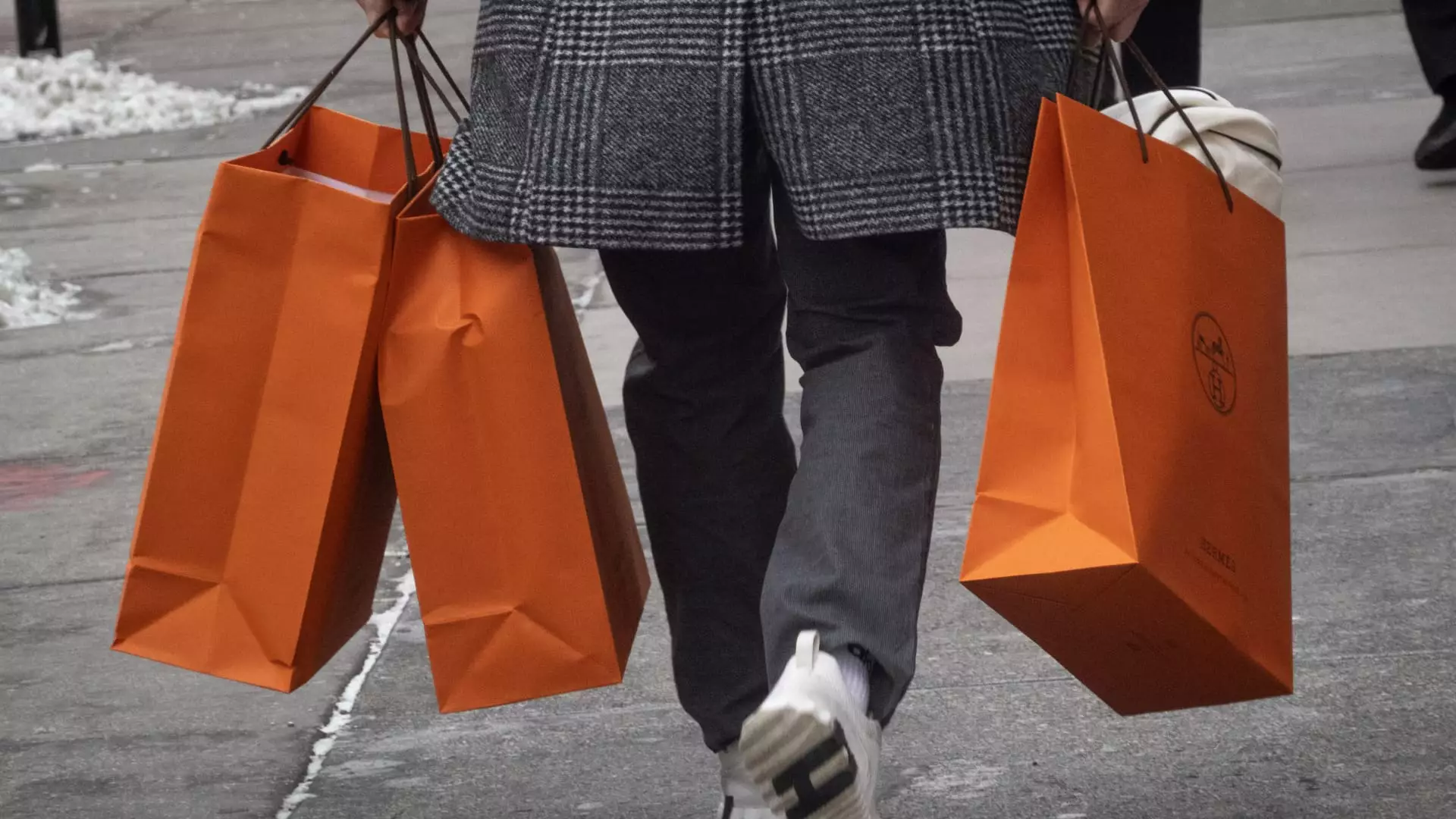As global economic trends continue to intertwine, European luxury brands are positioned at a precarious crossroads. With recent U.S. tariff announcements giving rise to fears of an impending recession, the once-glimmering potential for recovery in the luxury sector has begun to fade. Companies like LVMH, Richemont, Kering, and Hermes, staples in high-end fashion, are now staring down a turbulent market that becomes less forgiving with every economic downturn. The question isn’t whether these brands will feel the heat, but rather how intensely they will be impacted.
The Tariffs’ Immediate Impact: More Than Just Numbers
Initially, the tariffs may appear to have left luxury brands relatively unscathed, thanks in part to their core European identities. Merchants of high fashion often bask in the allure of their heritage, which is a crucial component of their market strength. While President Trump offered a temporary reprieve with reduced tariffs, the 10% levies introduced on U.S. imports from the European Union serve as an alarming signal. High-end fashion houses are less likely to capitulate to demands for U.S. manufacturing in light of their deeply rooted brand identities, choosing instead to pass incoming costs down to consumers. However, they overlook a vital truth: increased prices may not resonate favorably with even those who can typically shoulder such financial hits.
According to analysts, those price hikes could falter against the backdrop of a broader economic contraction. Wealthy consumers, once seemingly immune to market fluctuations, are now skittish in the face of a potential recession—the odds of which have escalated to 60% since Trump’s controversial tariff remarks, according to JPMorgan. This ignites concerns that the harmony that luxury brands once enjoyed may soon become a dissonant echo.
Confidence in Crisis: Will Luxury Brands Adapt or Collapse?
The luxury landscape is currently shadowed by uncertainty, amplified by market volatility and consumer hesitance. Analysts, such as Adam Cochrane from Deutsche Bank, have raised alarm about the possibility of a long-standing negative influence on luxury demand. His assessments have painted a stark picture: the wider economic downturn could lead to postponed recoveries in high-end retail. Even a minor shift in consumer psychology could have devastating consequences for brands that have thrived in post-COVID optimism.
Luca Solca, a senior analyst at Bernstein, emphasizes the need to scrutinize the secondary and tertiary impacts of these tariffs. While the initial effects may look minimal, the ripple effects could pose significant threats. If the new American policies trigger a deeper global recession, the fabric of luxury spending—as we have known it—could unravel entirely. This sentiment isn’t just numerical echoing; it’s a clarion call for brands to adapt and not assume that wealthy clients will remain impervious to broader economic woes.
Chinese Demand and the Global Luxury Market: A Slippery Slope
Despite only generating 15% to 30% of sales from the Americas, European luxury brands can’t afford to ignore the importance of the U.S. market, especially in light of waning sales from China. The 125% tariffs effective on European imports to the U.S. could further diminish already subdued Chinese spending, exacerbating the current uncertainties. With the luxury market relying on a delicate balance of various regions, a downturn in one area could potentially destabilize others, leading to an overarching decline in sales.
Market dynamics have shifted substantially over the last few quarters, but can luxury brands truly pivot to prioritize American growth in such a tumultuous climate? The risk here is palpable, as a single misstep could unravel years of progress. The allure of luxury must contend not just with fashions, but also with economics that shift underfoot.
The Future: Brands at a Crossroads
The luxurious façade displayed by brands like Hermes and Burberry may soon be tested as the impact of tariffs reverberates deeper into consumer purchasing patterns. While some brands might seem better positioned to weather these storms, the reality is that any luxury label could fall into the chasm of dwindling demand if they miscalculate consumer sentiment regarding both alternate sources and price points.
Eager analysts and investors must carefully examine whether signs of recovery were simply a mirage in a desert of mounting challenges. Deutsche Bank’s lowered luxury sector growth projections and Citi’s warnings about potential future threats highlight a sobering reality: the glimmering world of European luxury is far less robust than it may appear. In a volatile market rife with uncertainty, adaptability will be the key for those brands seeking to survive the turbulent economic landscape ahead.

